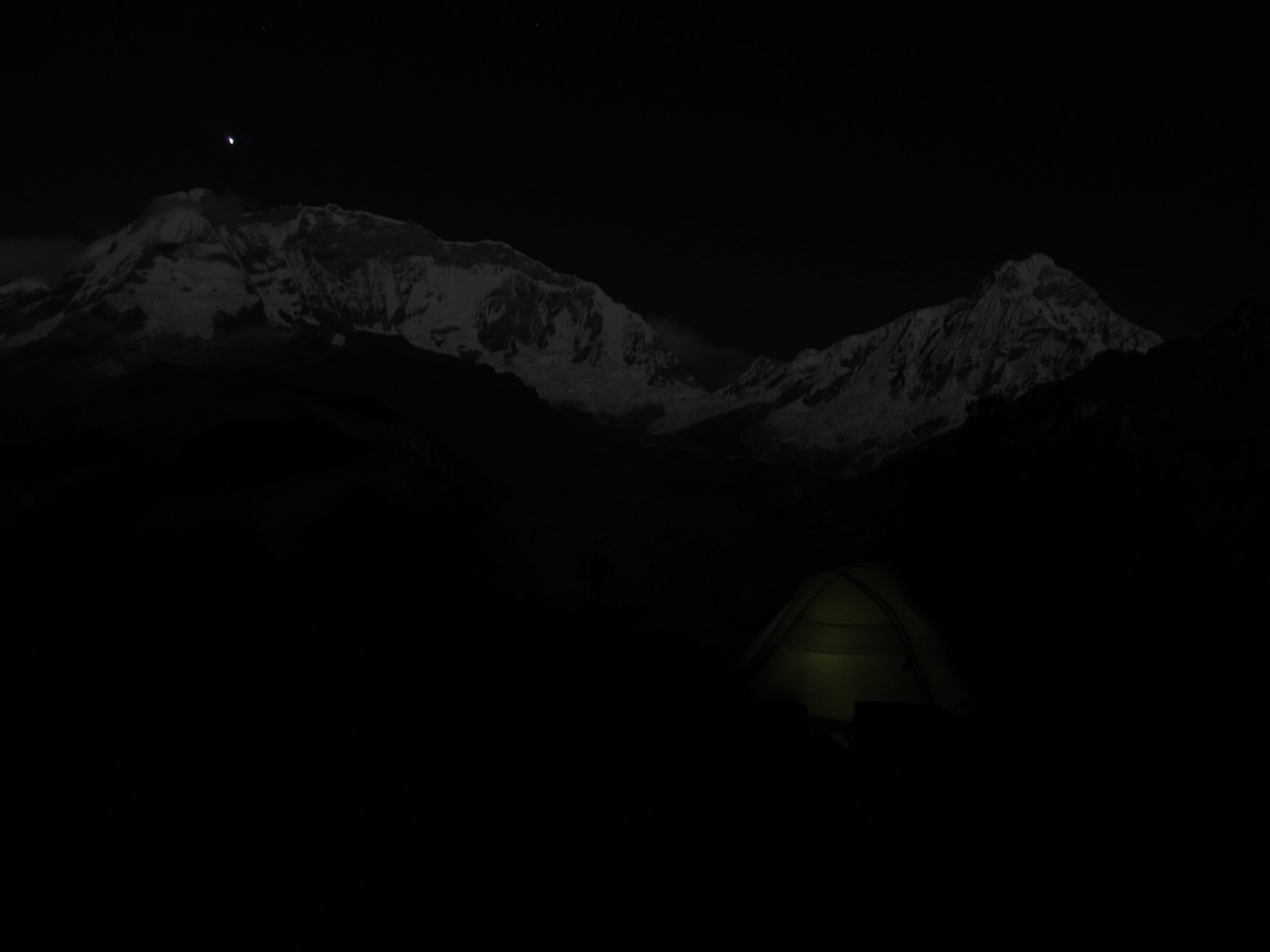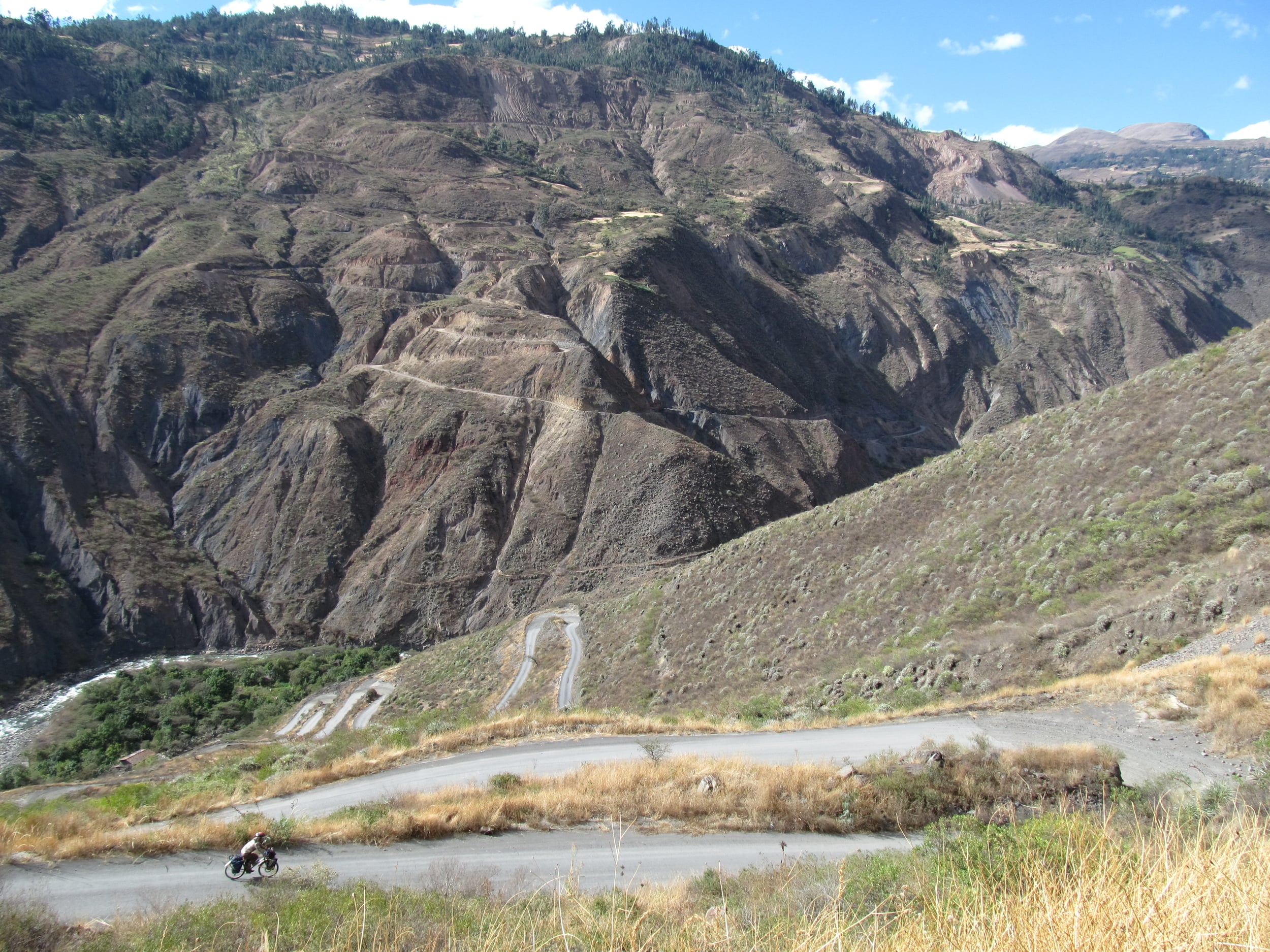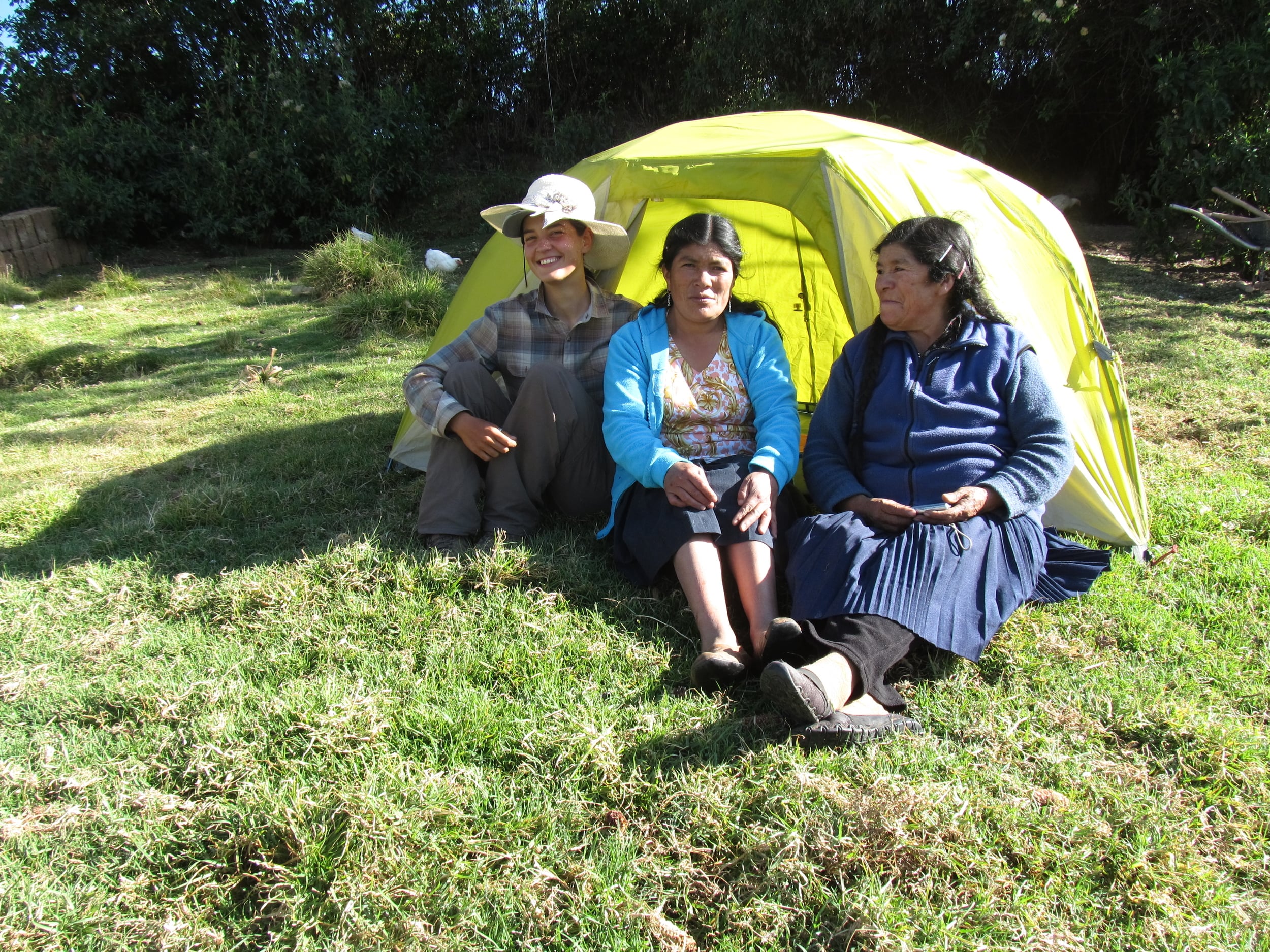by Sara Dykman
It has been just under a month since we set off from Huaraz with the pesky date of September, 15th looming on the horizon. Well, not exactly ON the horizon, more like far, far, far beyond the horizon. We were well into our 90 day visa and had yet to turn over our overwhelmingly large map of Peru. The September 15th date was when our Peruvian visas would expire, and so the math seemed simple: Our typical attitude of choosing sorry dirt roads that seem to loop backwards over pavement and direct routes would have to change. We figured out a direct route and set off… kinda.
Huaraz sits well below the Cordillera Blanca, a giant among giants in the Andes. Snow glints off towering peeks from the city full of tour operators and shops of knock off North Face gear. Even with the reality of our departure date, I looked at our map and just couldn’t resist the small red dotted line that crossed over this famous range.
So we made a decision. We headed up the road scarred into the hill side, watching glaciers grow around us, the white tops of mountains breaking the blue skys. We climbed for two days, descended for one. Now we had to get back to the highway. Thus, we cycled a few miles south, found the other mountain crossing and cycled back over the Cordillera Blanca. Dumb? Yes. Worth it? Probably.
Once back to the highway we looked at our map. In the course of seven days we had crossed three 4,000+ (13,100ft) passes, including our highest pass of the trip at 4,890m (16,043ft), we had seen the tallest mountain in Peru from every side, we had cursed clouds that made some of the climbing seem not worth it (uh…we can see clouds without climbing 6,000ft thanks), AND we’d managed to get 21k (13 miles) farther north. Not exactly bee-lining it to Ecuador.
With that we got a bit more serious. We cruised downhill from the mountains, leaving cool air and thick vegetation behind for deserts, wind, and cactus. This included an awesome section of the highway called Canyon del Pato, which stared a quiet road hanging off a steep valley wall or in a steep valley wall (with 30 something tunnels) that fell into a strong, picturesque river. As we lost elevation we snuck northward.
It was a week of up and downs to Huamachuco. With our limited Spanish I feel much less guilty telling people that when I find a joke that works I recycle it in every village we stop in. The joke for this section was to look exhausted (easy to do), and then suggest they build a sky bridge. They would most often laugh and then explain to us how the roads drop down then climb right back out. We didn’t need to be told. Sometimes they would look across the valley we had just flown down, say how brave we were, take our picture, offer us some gaseoso (a kind gross way of saying soda if you ask me) or jello, and leave us to continue with the ups and downs.
Many of these ups lead us to mines. Some just a hole in the hill, some giant steps of destroyed mountain tops. All mostly gold mines, with an impact I was surprised to see. Almost every local we talked to told us not to drink the water because the mines had contaminated the water. Most were bitter over these mines. Some talked of dead cattle and sheep. When I asked about frogs, they always would reply that there were frogs until the mines contaminated the water.
I was happy to see that not only did the locals see the effects of mines and link the foreign companies and contaminated water, in parts of northern Peru without mines yet, many people were fighting them. Visit www.savebristolbay.org to learn about how people in the United States are fighting tirelessly (but need your help) to stop a gold mine in Alaska, potentially contaminating waters that give life to the last great salmon run and important indigenous culture.
After Huamachuco we figured at 30 miles a day we could reach Ecuador in time. Now, before you think ’30 miles a day, duh, no problem’, let me remind you that sometimes Nia and I celebrate 15 mile days.
The route after Huamachuco was doable. It was paved, direct, and well stocked. We didn’t need to carry our weight in gummy bears and Sublimes (the local chocolate candy bar). The well-stocked road though meant lots of towns, lots of houses, and lots of people. Thus, camping was less about finding a hidden spot for the night, and more about finding a friendly face to ask about camping in their yard.
We met Margarita and Flor in Chewypan, a town not represented on our map or distinguished with a sign. Margarita had a small shop in her house, and we stopped to ask about camping. Instead of talking she remained seated but smilling on a stump in her yard and pointed to the green patch of grass currently feeding a few jerky chickens. To insure I wasn’t tied up in a Spanish mistranslation (ha, imagine if a stranger started setting up a tent in your yard after you had pointed down the road to the campground or Motel 6), I repeated our needs while miming camping and sleeping.
Margarita and Flor helped us push our bikes up the hill of their yard. After a long debate and several tent moves later, we decided not to camp with the chickens, nor the pig, but on the porch smack dab next to her house. While we set up, we explained our gear. Margarita called her son living in Lima to brag about the gringos (white people) on bikes staying with her.
By the next morning I was sad to leave. It had been fun to chat with two women living independently in Peru. Flor, Margarita’s daughter, said she would never marry because most of the men she knew hit their wives and it wasn’t worth it. Her mom nodded in agreement, something I feel few Peruvian moms would do. But before we left we had a typical Peruvian photo shoot. The only exception was that we posed with the tent and a bowl of cancha (Peruvian popcorn I a-d-o-r-e).
Peruvians are constantly asking to take photos with us. And unlike a photo I’d expect to take in the US, where everyone gets in, they all want their photo taken separately. Nia and I can stand there smiling like crazy people for two or three minutes sometimes while a group of five figures out all the combinations of people possible.
From Margarita and Flor’s house it would be mostly smooth sailing to the border, cycling through Shitabamba (does every English speaker stop and take a photo?), Cajabamba, Cajamarca, bambamarca, etc. The only setback was mixing up all those cajas and marcas. Well that, the construction, and the beef heart.
The construction leaves little to type about. Mostly, construction is annoying –especially on the uphill- because as we slowly climb we get to deal with the construction workers. Most are nice, but the annoying ones that whistle, yell ello (hello with a Spanish flair), and giggle about how clever they are probably can’t imagine that we have been dealing with the same joke every minute or so for a few hours. There is only so many times you can say hola, Buenos dias, como estan (hello, good morning, how are you?) among whistles and giggles before you start to hate construction.
The beef heart is a bit more memorable. We were cycling with barely any food or water when a woman ran to the street to invite us for tea. We, of course, said yes. We sat in Maria’s yard watching the turkeys parade around, the dog eye us suspiciously, and the impaled dead trout drying on the fence post while Maria boiled us some water. With tea came an…interesting… pumpkin dish, bread and cheese. Then as we were gearing up to go Maria says she is cooking us rice. So we sit down and resume our vigil. She asks us if we want the trout to go with our rice, and we say no. Not only do we not want the trout, we do not want to eat all this women’s food (we agreed we’d only eat the rice if we could pay for it). So, when we sat down for our rice, we were surprised to see the heart. How did we know it was heart? The GIANT veins and arteries. Well, that and the deep red color. I ate my beef heart, it was…new.
It has been people like Maria that have broken up the last few weeks of more boring highway riding. After spending time with someone so different from us, but still so willing to open up their home to us, they stay in your thoughts. I think about these people, their lives, and the values they share, long after the beef heart taste has left.
The last of the construction would end before the border with Ecuador. We cycled through the heat, descended low into the jungle, gorged on papaya juice. We crossed into Ecuador yesterday, September 14th, with one day to spare. Peru will be missed, but for now we are excited to see what Ecuador has to offer.




















